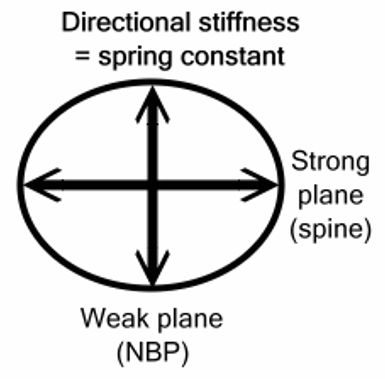Basic definitions and physics of Spine
This is a summary from David Tutelman’s article “All About Spines”.
This article can be found in full on his website www.tutelman.com
Basic definitions and physics:
· Shafts are not perfectly symmetrical. They have directions where the shaft is stiffer and directions where the shaft is less stiff.
· "Spine" is the term for the stiff direction.
· "Natural Bending Position" (NBP) is the term for the less stiff direction.
Every shaft where the spine is big enough to be discerned has:
o Two spine directions, 180º apart (that is, opposite one another).
o Two NBP directions, 180º apart (that is, opposite one another).
o The spine directions are 90º from the NBP directions.
When a shaft bends during the golfer's downswing:
o Not all the bend is in the same plane. There are large early bends near the heel/toe plane, and smaller bends in odd directions late in the downswing.
o The bend at and just before impact is not neat enough -- nor consistent enough from golfer to golfer -- to be a factor in any simple rule for spine alignment.
How to measure and align spines:
a) Don't use bearing-based spine finders to locate the spine; they give wrong answers. Use FLO (Flat Line Oscillation) instead.
b) The high-frequency FLO plane is the pair of spines (separated by 180*); the low-frequency FLO plane is the pair of NBPs (again, separated by 180*). The spine plane and the NBP plane are separated by 90*.
c) There is no provable best direction for aligning the spine. Theories differ, and the experimental evidence is not conclusive. But most experiments and practice say to place the spine (S/FLO) in the heel-toe plane and the NBP (N/FLO) in the target plane. The most likely theories also support this alignment.

